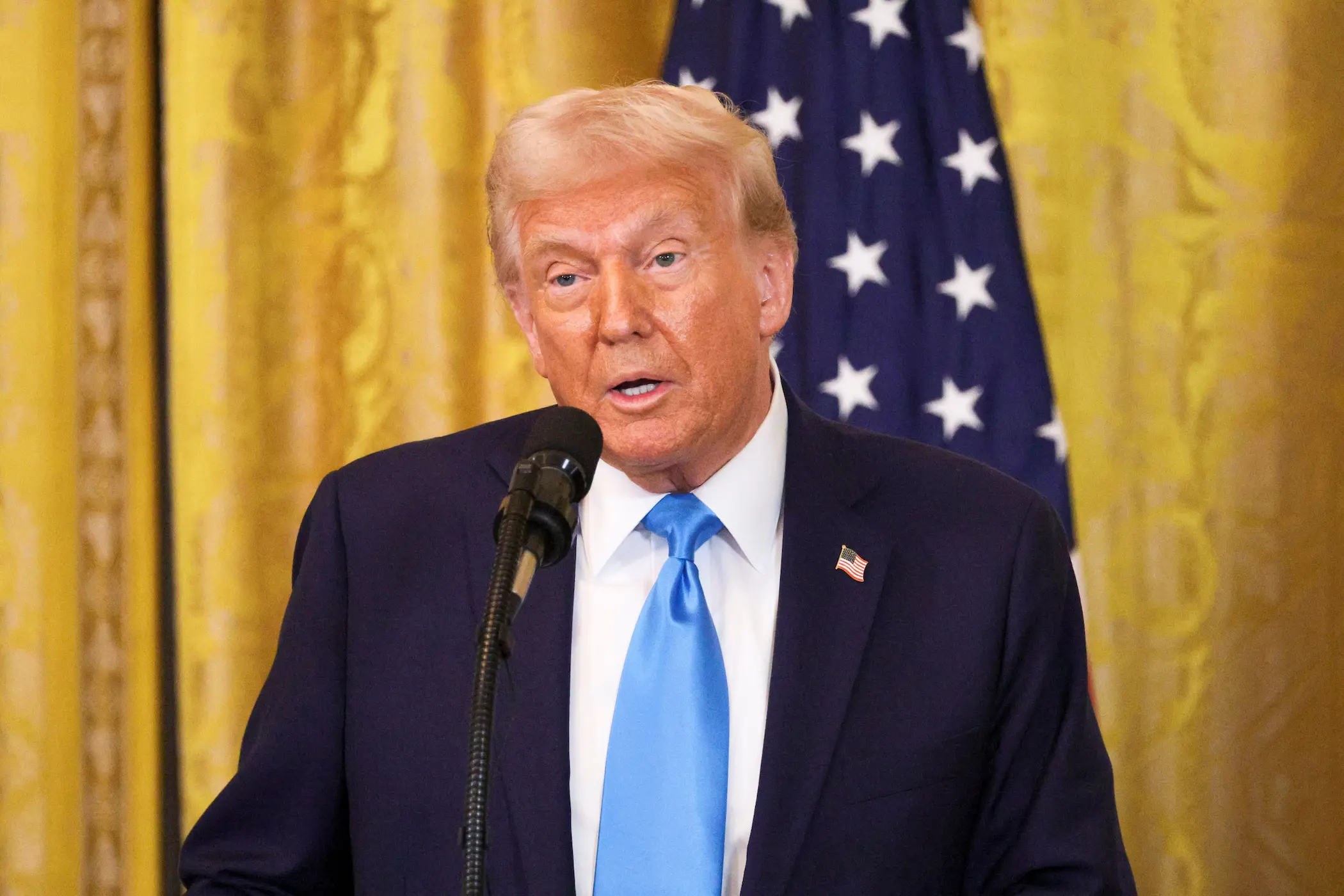7 Nov 2025
The 2025 American Economy: Navigating the Policy Crosscurrents of Tariffs and Tax Cuts
This analysis provides a comprehensive analysis of the United States economy as of November 2025, addressing the query of whether its current status is one of a "boom" or a "downslide." The principal finding is that the economy is exhibiting clear signs of downsliding in the immediate term. This assessment is substantiated by a pronounced deceleration in the labor market and a pre-emptive, counter-inflationary interest rate cut by the Federal Reserve, which has explicitly prioritized mounting employment risks over persistent inflation.
The 2025 economy is uniquely defined by the simultaneous implementation of two contradictory, multi-trillion-dollar policies. This has created a state of extreme tension and volatility:
A Contractionary Trade Shock: A new, aggressive tariff regime has been implemented, acting as a significant, broad-based tax on imported goods. This policy is demonstrably raising prices, eroding household purchasing power, and creating a drag on economic activity.
An Expansionary Fiscal Stimulus: The "One Big Beautiful Bill Act" (OBBBA) was passed, enacting a massive, deficit-financed stimulus by extending the 2017 tax cuts. This policy is designed to boost demand and investment.
The current "downsliding" dynamic is a direct result of the tariff shock's immediate contractionary impact, which has, for now, overpowered the stimulus. The Federal Reserve's October 2025 decision to cut interest rates confirms its judgment that "downside risks to employment" constitute the most immediate threat.
This analysisU.S. forecasts a volatile and unstable path. The 2025 slowdown is expected to give way to a temporary, stimulus-fueled "sugar high" in 2026, as the OBBBA tax cuts take full effect and boost demand. This artificial boom is projected to fade quickly by 2027-2028, revealing an economy structurally strained by a gross national debt exceeding $38 trillion, a persistent $1.8 trillion annual deficit, and a deteriorating net international investment position of -$26.14 trillion. The new policy mix has locked in this structural weakness.
20 Oct 2025
The Ozempic Shockwave: How Is One Drug Impacting Global Food and Insurance Systems?
The worldwide rise of semaglutide—a marketed formulation under different names, most notably Ozempic—is occurring rapidly and in various ways. Since its initial approval for type 2 diabetes, Semaglutide has quickly adapted to drive changes in personal health behaviours, market dynamics, and healthcare policy priorities. The drug operates through a complex mechanism that alters the body’s appetite and metabolism, leading to the transformation. As a result, there is a widening divergence between its regulatory objective and a growing use as a weight loss tool.
The disconnect is not just clinical but a systemic coming together of prevalent cultural norms, insurance structures, pharmaceutical supply chains and global consumer trends. The increasing use of Semaglutide across different social classes and countries gives rise to important political economy challenges regarding the price of the therapy, access to it and the sustainability of national health systems.
This analysis examines semaglutide’s disruptive evolution from a drug invention to a global public health tool. The analysis focuses on the situation in the United States (U.S.), but it also examines future possibilities where affordability and scale could make the drug essential in combating obesity and metabolic disease.
30 Sep 2025
An Unequal Cost: How Space Debris Deepens the Exclusion of Developing Nations from the Economies of the Future
Since the launch of the first satellite in 1957, the Low Earth Orbit (LEO) has undergone a profound transformation from a near-empty frontier into a congested and polluted environment shaped by decades of human activity. Non-functional satellites, spent rocket stages, and fragmentation debris from collisions and explosions have accumulated to a mass exceeding 14,700 tons. Critical events have amplified the scale of the problem, most notably China’s Anti-Satellite Test (ASAT) in 2007 and the 2009 collision between the U.S. Iridium-33 and Russia’s Kosmos-2251, which together generated nearly one-third of all catalogued debris in LEO.
This material is unevenly distributed but highly concentrated between 750 and 1,000 kilometres, an orbital belt central to Earth Observation and communications. Objects in this altitude range can persist for centuries, while in the Geostationary Orbit (GEO) debris may remain indefinitely, underscoring the long-term persistence of the hazard. Consequently, orbital space has shifted from an open frontier to a finite and polluted resource requiring collective governance.
This study examines the economic and political dimensions of space debris. It assesses the direct costs borne by operators, the cascading risks to terrestrial infrastructure such as Global Navigation Satellite Systems (GNSS) and weather forecasting, and the disproportionate challenges facing developing nations. It concludes by analysing potential responses, ranging from mitigation strategies to Active Debris Removal (ADR), within the broader framework of international governance and global equity.
26 Sep 2025
The Global Economic Impacts of Starlink Outages: From Operational Fragility to Pathways of Resilience
In recent years, Low Earth Orbit (LEO) satellite constellations have emerged as a transformative layer within the global digital infrastructure, marking a departure from their original role as connectivity solutions for remote regions. These systems are now embedded within the operational cores of critical sectors such as civil aviation, maritime logistics, financial markets, and defence. The clearest manifestation of this structural shift is Starlink, operated by SpaceX, which by mid-2025 had exceeded 7 million users across more than 150 countries, with exponential growth rates in high-value, latency-sensitive industries.
This rapid technological and geographical expansion has positioned Starlink as a globally integrated utility—yet one that operates outside conventional regulatory regimes. It represents a structural concentration of control over global data flows in a single, privately held entity. The dual outages that occurred in July and September 2025 exposed deep systemic vulnerabilities within the Starlink network, including software architecture fragilities and environmental sensitivities to space weather events. These incidents prompted urgent questions about the stability of a critical infrastructure layer that now underpins sectors central to national sovereignty and global economic coordination.
This report interrogates the systemic risks embedded in the global economy’s growing dependence on LEO constellations through two interlinked analytical lenses. The first is a technical-political economy perspective, which examines the underlying architecture of the Starlink network and the typology of its failure modes—both endogenous and exogenous. The second is a forward-looking, scenario-based assessment that models the potential global economic consequences of a 24-hour Starlink outage in 2032. Through this dual approach, the analysis traces the contours of a new strategic dilemma: how to govern an emergent, transnational infrastructure whose failure could trigger multi-sectoral crises at planetary scale, yet whose design and control remain entirely privatized.
25 Sep 2025
UAE’s New Trade Bloc: Ambition, Global Positioning, and Challenges
The United Arab Emirates (UAE) is intending to establish a new trade bloc, a strategic and interconnected initiative aimed at achieving multiple goals on both the national and the international level. This trade block should not be interpreted in isolation, rather as part of the UAE’s wider economic and geopolitical strategy, which reflects the changing and evolving dynamics of the global trade landscape.
In a fragmented globalization era, where competition and integration attempt significantly increase between the regional trade networks and the multilateral systems, the UAE is poised to maintain its influence and relevance by positioning itself at the forefront of the global landscape. This approach will benefit the UAE on different levels, including advancing domestic priorities while simultaneously enhancing its leverage within the evolving global economic power. Nevertheless, the bloc’s success is not completely guaranteed, as it will need to navigate significant regulatory, infrastructural, and political barriers to translate its potentiality into tangible outcomes.
23 Sep 2025
Structuring Power: Who Will Command the Future Map of Global Aviation
The global aviation industry is undergoing a historic realignment, as the center of gravity shifts decisively from West to East—a transformation that reflects deeper dynamics in the redistribution of economic and geopolitical power within the international system. For decades, Western carriers dominated the skies, leveraging superior infrastructure, extensive fleets, and mature consumer markets. Today, however, airlines based in the Middle East and Asia are emerging as the new engines of growth and connectivity, assuming a central role in redrawing the global map of intercontinental air travel. While the COVID-19 pandemic accelerated this trajectory, it did not initiate it; rather, it exposed the structural vulnerabilities of legacy Western airlines and underscored the strategic foresight of their Eastern counterparts, whose recovery was bolstered by extensive state support and institutionally anchored expansion strategies.
One of the most visible manifestations of this shift is an intense race to modernize fleets with next-generation, long-range, fuel-efficient aircraft—an investment wave that exceeds $200 billion in the Middle East alone. This is not merely a technical upgrade; it constitutes a deliberate, long-term vision to project aerial influence, enhance global market competitiveness, and entrench these airlines as sovereign instruments of statecraft.
Accordingly, this study analyzes the contours of this transformation through an integrated framework that examines operational strength, capital investment in fleets, network architectures, and the adaptability of business models. It further explores the growing convergence between national economic visions—such as Saudi Arabia’s Vision 2030 and China’s Belt and Road Initiative—and the strategic deployment of national carriers as tools of geopolitical influence. Rather than forecasting definitive outcomes, the paper seeks to situate this aviation shift within a broader, more volatile global context—one where profitability and efficiency increasingly intersect with sovereignty and strategic positioning, and where the skies themselves become arenas for shaping the balance of power in the decades ahead.
18 Sep 2025
Emotion in the Machine: Economic Gains vs. Security Concerns
The rapid evolution of artificial intelligence, propelled by transformer models like OpenAI’s ChatGPT, has reshaped industries and redefined human–machine collaboration. Beyond generating language, AI now powers psychological assessments, financial sentiment analysis, and synthetic empathy—making emotional intelligence a critical asset. Within this shift, emotional audio intelligence has emerged as especially strategic, enabling machines to both recognize affective states and reproduce them in synthetic voices. Meta’s 2025 acquisition of WaveForms AI reflects this trend, securing early control over “programmable affect” and underscoring both the economic promise and geopolitical risks of affective computing. By turning AI from a diagnostic tool into a simulation system, the deal positions Meta to create digital agents capable of projecting warmth, urgency, or reassurance—reshaping the future of human–machine interaction.
Meta’s 2025 acquisition of WaveForms AI marks a turning point in artificial intelligence: the rise of emotionally intelligent audio as both an economic opportunity and a national security risk. AI has evolved rapidly, propelled by transformer models like OpenAI’s ChatGPT, and now extends far beyond language generation. From psychological assessment to financial sentiment analysis, its ability to interpret emotions has become a critical asset. Emotional audio intelligence pushes this further by enabling machines not only to recognize affective states but also to reproduce them in synthetic voices. With WaveForms, Meta secures early control over this capability—transforming AI from a diagnostic tool into a simulation system, capable of projecting warmth, urgency, or reassurance in ways that could redefine human–machine interaction.
11 Sep 2025
Beyond the 9-to-5: Promise and Peril of the Middle East’s Gig Economy
The labour market is undergoing a profound transformation as millions worldwide move away from traditional payroll jobs toward flexible, independent work enabled by digital platforms. This shift has accelerated the growth of the gig economy, which is reshaping employment patterns, stimulating entrepreneurship, and driving innovation. At the same time, it raises new challenges related to income volatility, worker protections, and regulatory oversight.
The term “gig,” once used by musicians to describe short-term performances, now refers to a wide range of freelance, contract, or temporary jobs that prioritize flexibility over permanence. Today’s gig economy is powered by digital platforms that link workers with clients, including ride-hailing services, delivery apps, freelance marketplaces, and online teaching platforms. While this model provides economic benefits such as greater productivity, adaptability, and entrepreneurial opportunities, it also exposes workers to risks concerning rights, job security, and fair treatment. Achieving a balance between innovation and equitable protections remains key.
In the Middle East, the gig economy is expanding rapidly, fuelled by a young, digitally skilled population, unemployment pressures, and government-led diversification strategies. By 2024, the region contributed more than 7% of the global gig market, with freelancing, delivery services, and digital platforms becoming central to local economies. Policymakers are responding through freelance visas, skills programmes, and targeted regulations; countries such as Saudi Arabia and the United Arab Emirates (UAE) are aligning gig work with ambitious visions of transformation, while Egypt demonstrates both the sector’s strong growth and the persistent challenges of informality and regulation. While the gig economy has thrived in the Middle East, its full potential can only be realized through a new generation of governmental reforms that go beyond just supporting growth and actively build a stable and protected freelance workforce.
11 Aug 2025
Middle East in Energy Transition: From Stopgap to Global Architect
On July 28, 2025, during a joint press conference in Scotland with British Prime Minister Keir Starmer, U.S. President Donald Trump issued an unexpected ultimatum to Russia. He declared that the Kremlin had no more than 10 to 12 days (until approximately Aug. 8, 2025) to make tangible progress toward ending the war in Ukraine. Should Moscow fail to comply, Trump warned that President Vladimir Putin would face a sweeping package of economic sanctions and severe trade restrictions. This escalation came on the heels of prolonged diplomatic stagnation and Trump’s increasingly vocal frustration with Russia’s continued military operations.
Subsequently, on July 31, 2025, former Russian President and current Deputy Chairman of the Russian Security Council Dmitry Medvedev responded with a pointed and ominous message via his Telegram channel. In his remarks, he invoked the “Dead Hand”—Russia’s semi-automated nuclear retaliation system designed to launch a retaliatory strike even in the event of a complete decapitation of the nation’s leadership.
In response, President Trump ordered the deployment of two U.S. nuclear submarines to strategic positions, framing the move as a necessary precaution in the face of what he described as “extraordinarily dangerous” nuclear threats. Notably, he refrained from specifying whether the submarines were nuclear-powered only or also nuclear-armed—introducing deliberate strategic ambiguity and reinforcing the doctrine of pre-emptive deterrence through calibrated uncertainty.
What renders this sequence of events particularly significant is that the confrontation did not remain confined to the U.S. and Russia. Its repercussions quickly extended to India, which was thrust into the geopolitical crossfire. On July 31, the Trump administration announced the imposition of a 25% tariff on all Indian exports to the United States, accompanied by threats of further penalties targeting Indian firms that continue to purchase Russian crude oil or engage in defence cooperation with Moscow. The rationale behind this punitive action lies in New Delhi’s deepening energy relationship with Russia.
Although the Indian government has not officially announced any suspension of contracts with Russian suppliers, discreet directives were reportedly issued to state-owned refiners instructing them to explore alternative sources in the global spot market. This pivot has begun to materialize reflecting New Delhi’s attempt to maintain equilibrium between preserving its strategic autonomy and mitigating mounting U.S. pressure.
Yet the broader implications of this crisis extend well beyond geopolitical brinkmanship. What is unfolding is a systemic shock to the global order—one that is reverberating through energy markets, food security systems, arms trade corridors, and supply chains. The consequences will not be distributed evenly: while some Middle Eastern states stand to benefit from surging demand and price shifts, others may face acute vulnerabilities due to trade disruptions, inflationary pressures, or capital flight.
30 Jul 2025
AI’s Crossroads: Decoding the Middle East’s AI Transformation
In a fast-paced world driven by technological advances, the global landscape is being reshaped by the rapid rise of Artificial Intelligence (AI), a technology that is playing a vital role in bringing in major economic shifts, unleashing a new era of GDP growth. One of the most active regions concerning AI integration is the Middle East, a region not only observing or keeping up, rather revolutionizing this integration as governments across the region harness the power of AI to reshape their policies, implement national strategies, attract smarter investments while powerfully reconstructing their futures. Such adaptation has already borne fruit, as different economies in the region became more agile and dynamic, systems evolved to operate more efficiently and smarter, resulting in providing better services to their respective populations.
Despite the rapid progress and fast growth of AI in the Middle East, the region still faces a set of challenges, including the lack of properly trained individuals and the constant need of innovative solutions and new ways to narrow this gap. On the other hand, the region lacks legislative framework to regulate the use of AI in a fair and ethical manner. While a growing need for sustainable infrastructure development underlines the fact that more work is still required, overcoming these obstacles and challenges will lead to unlock the region’s full potential, overcome competition and become a major player in the AI world globally.
17 Jul 2025
What If: As-Suwayda Sought Independence?
As-Suwayda has emerged as a profoundly complex arena amid the sweeping transformations reshaping Syria following the fall of the Assad regime and the formation of a new centralized transitional government. Within this volatile context, calls for self-determination from segments of the local Druze community have gained traction.
There are four critical fault lines worth exploring: the acute internal fragmentation of the Druze polity; the ideological and constitutional dissonance between local autonomy demands and the centralized architecture of the new Syrian state; the near-total economic collapse of the province; and the intensity of regional entanglement that constrains meaningful sovereignty.
13 Jul 2025
From Isolationism to Intervention: Trump’s MENA U-Turn
The inauguration of Donald Trump as the 47th president of the United States for his second term took place on Jan. 20, 2025. Trump outlined a wide-ranging agenda that blends traditional conservative values. Notably, he signed 26 executive orders on Inauguration Day, which is the highest number by any U.S. president to sign on that day. Trump’s second-term agenda focuses mainly under the banner of “Making America First,” “retribution,” and “law and order.” He aimed at aggressively reshaping the Federal Government, restoring hardline policies from his first term, and shifting America’s global role through protectionism and reduced international engagement.
Trump had emphasised avoiding foreign wars and promoting a non-interventionist foreign policy, focusing instead on border security and economic growth. He opposed “endless wars” and advocated reducing the U.S. military presence abroad. He repeatedly stated that the U.S. should avoid costly wars in the Middle East that lack clear American interests, using slogans like “We are not the world’s policeman” and “End the endless wars.” He sharply criticised previous administrations for prolonged military engagements in Iraq, Afghanistan, Libya, and Syria. However, despite these promises made during his 2024 campaign, Trump’s actions in office have diverged significantly from his non-interventionist stance.











